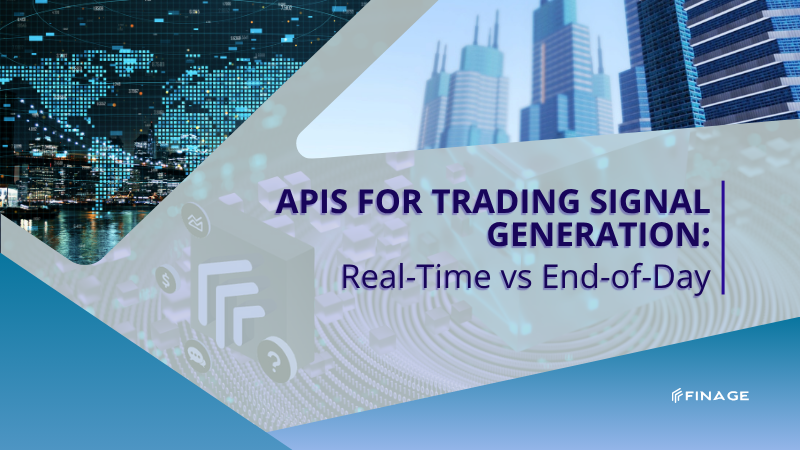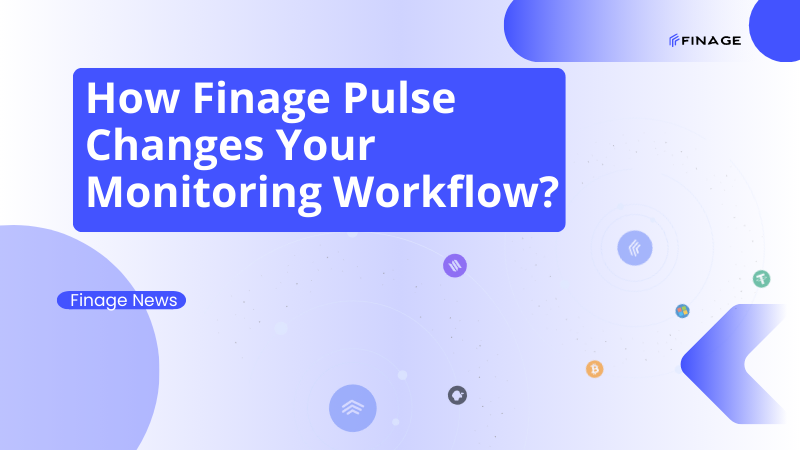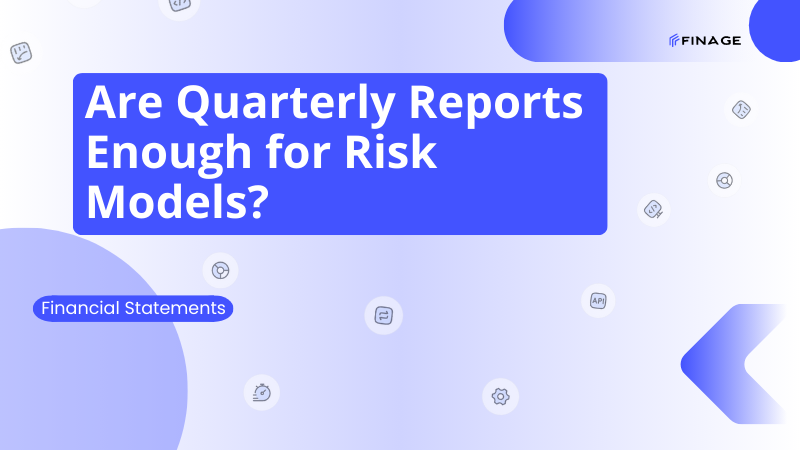APIs for Trading Signal Generation: Real-Time vs End-of-Day
9 min read • June 3, 2025

Introduction
In algorithmic and discretionary trading, signal generation is everything. Whether you're building a momentum scanner, mean-reversion model, or risk filter, the timing and granularity of data you use directly impacts your results. And that's where a crucial decision comes in: should your strategy rely on real-time data, or is end-of-day (EOD) data sufficient?
Both have their place in the modern trading stack. Real-time APIs enable split-second execution and intraday models, while EOD data powers backtesting, swing trading, and daily signal generation — often at a fraction of the cost and complexity.
In this guide, we’ll explore how to select the right data flow for your trading signals, break down the trade-offs between real-time and end-of-day APIs, and show how Finage’s market data infrastructure supports both seamlessly.
Table of Contents
- What Is Trading Signal Generation?
- Real-Time Market Data APIs: Features and Use Cases
- End-of-Day Market Data APIs: When Simplicity Wins
- Comparing Real-Time vs EOD APIs: Latency, Cost, and Complexity
- How to Choose the Right Strategy for Your Trading Model
- Using Finage APIs for Real-Time and EOD Signal Generation
- Final Thoughts: Build Smarter Signals with Finage
1. What Is Trading Signal Generation?
At the core of any trading strategy — whether manual or automated — lies a signal. A trading signal is a trigger or condition that tells a trader or algorithm when to buy, sell, or stay out of the market. These signals are generated based on market data inputs, technical or fundamental indicators, and statistical models.
Signal generation can range from simple moving average crossovers to complex multi-factor machine learning models. But all of them share one thing in common: they rely on timely, reliable data.
There are two main types of signal generation workflows, depending on how fast and how often you need your data:
- Real-Time Signals: Used for intraday or high-frequency strategies that act on price changes within milliseconds to minutes.
- End-of-Day (EOD) Signals: Designed for daily or longer-term strategies that process market data after trading closes.
Whether you're trading forex, stocks, or crypto, choosing the right type of signal — and the API that powers it — will define the accuracy, speed, and cost-efficiency of your entire strategy.
2. Real-Time Market Data APIs: Features and Use Cases
Real-time market data APIs provide live updates on prices, trades, quotes, and market depth. These APIs are used when traders need to act as soon as market conditions change, often within milliseconds. In today’s markets, this speed is crucial for staying ahead of the competition, especially in algorithmic and high-frequency trading (HFT).
Key Features of Real-Time APIs
- Low Latency Feeds
Finage’s WebSocket-based APIs deliver updates instantly as they happen — ideal for triggering rapid trades or updating dashboards in real time.
- Tick-Level Precision
Every trade or quote event is delivered with a timestamp, allowing developers to build ultra-precise strategies (e.g., scalping, arbitrage).
- Multi-Asset Coverage
Real-time APIs are available for stocks, forex, cryptocurrencies, indices, and ETFs, letting you run multi-asset strategies from one endpoint.
- WebSocket Streaming
Persistent socket connections reduce overhead by streaming data continuously without the need to poll.
Use Cases for Real-Time Trading Signals
- Scalping Bots: Execute trades within seconds based on micro-movements or spread changes.
- Arbitrage Strategies: Exploit temporary price differences across exchanges or instruments.
- Liquidity-Based Signals: React to order book shifts or volume spikes.
- Dynamic Risk Management: Adjust positions as price volatility increases.
- Real-Time Alerts: Notify traders of breakout patterns, RSI thresholds, or unusual trades.
3. End-of-Day Market Data APIs: When Simplicity Wins
While real-time data offers speed and immediacy, end-of-day (EOD) data delivers clarity and stability. These APIs provide a complete summary of market activity after the trading day ends, typically including open, high, low, close, and volume (OHLCV) for each asset.
EOD data is widely used by technical analysts, quantitative researchers, and long-term traders who prioritize signal quality over speed.
Key Features of EOD APIs
- Simplified Data Structure
Clean, consolidated OHLCV data makes it easy to run backtests or generate signals without parsing tick-by-tick noise.
- Reliable for Backtesting
EOD datasets are stable and final — no need to worry about real-time revisions or latency artifacts.
- Cost-Effective
Since EOD data is less resource-intensive than streaming data, it’s often cheaper — perfect for early-stage traders or bulk data analysis.
- Scalable Requests
You can fetch daily candles for hundreds of symbols across multiple months or years in a single REST API call.
Use Cases for EOD Trading Signals
- Swing Trading Models: Identify buy/sell zones based on moving averages, candlestick patterns, or RSI from daily closes.
- Portfolio Rebalancing: Adjust holdings once per day based on signal outputs.
- Factor-Based Investing: Run models using EOD technical indicators, price momentum, or volume metrics.
- Quantitative Research: Test hypotheses on years of historical data to discover alpha-generating signals.
- Market Summary Dashboards: Generate daily reports with top gainers, losers, or volume leaders.
4. Comparing Real-Time vs EOD APIs: Latency, Cost, and Complexity
Choosing between real-time and end-of-day APIs is not just a technical decision — it directly affects your infrastructure costs, development time, and the nature of your trading edge. Here’s how they stack up:
Latency
- Real-Time APIs
Latency can be as low as a few milliseconds when using WebSockets. Ideal for strategies where speed is critical (e.g., arbitrage, scalping, news-based trading).
- EOD APIs
Data is available after market close, typically within minutes to an hour. Best for systems that don’t require intra-day action.
Verdict:
Choose real-time for reactive systems, EOD for reflective ones.
Cost
- Real-Time APIs
More expensive due to infrastructure demands, especially with large symbol counts or 24/7 asset classes like crypto.
- EOD APIs
Cost-efficient and scalable — you can request large datasets across years without needing streaming connections.
Verdict:
EOD data is more budget-friendly, especially for backtesting and signal research.
Complexity
- Real-Time APIs
Requires connection management, socket reconnection logic, and live syncing to storage or models. Higher dev complexity.
- EOD APIs
Stateless HTTP requests. Easier to manage in batch pipelines or scheduled workflows.
Verdict:
Go with EOD APIs if you’re optimizing for simplicity or just getting started.
Signal Stability
- Real-Time APIs
Prone to false positives from noise or volatility unless filters are applied.
- EOD APIs
Clean signals based on finalized daily data — fewer surprises, more reliable entries and exits.
Verdict:
EOD is more stable. Real-time is more reactive but noisier.
5. How to Choose the Right Strategy for Your Trading Model
No matter how sophisticated your trading logic is, it’s only as effective as the data behind it. Picking between real-time and EOD data starts with understanding your trading frequency, signal sensitivity, and execution goals.
Here’s how to break it down:
Define Your Trading Horizon
- Short-Term (Milliseconds to Hours):
Requires real-time data. Strategies include scalping, intraday breakout trading, arbitrage, and high-frequency mean reversion.
- Medium to Long-Term (Days to Weeks):
EOD data is sufficient — perfect for swing trading, daily trend following, or fundamental overlays.
Analyze Your Signal Type
Ask yourself:
- Does the signal depend on tick-level changes or price patterns over seconds/minutes?
- Or can it rely on daily candle-based indicators like RSI, MACD, or simple moving averages?
If your signal depends on real-time volatility, choose WebSocket streams. If it’s more statistical and less time-sensitive, go with daily data.
Consider Execution Timing
Some strategies don’t act immediately on signals — they collect, rank, or filter before executing later.
For example:
- Quant equity models may generate signals using EOD data but execute at the next open.
- Scalping bots must act the second a condition is met — and therefore need real-time pricing and execution capability.
Assess Resource Constraints
If you’re building a low-latency trading engine, you need:
- Low-latency infrastructure
- Sophisticated queue and error handling logic
If you want to avoid all that and still build reliable signals, EOD is a clean and lightweight entry point.
Hybrid Strategies? Combine Both
Some of the best systems use EOD data for core model signals, then layer real-time conditions for optimized entries.
Example:
- Signal: Buy TSLA when 20-day RSI < 30 (EOD)
- Entry: Execute only if real-time volume exceeds daily average (real-time WebSocket check)
Finage supports both data types, making this kind of setup easy to implement.
6. Using Finage APIs for Real-Time and EOD Signal Generation
Finage provides a flexible data infrastructure that caters to both low-latency traders and systematic EOD modelers — all from one platform. Whether you're streaming tick-by-tick data or requesting structured OHLCV, the endpoints are developer-friendly and scalable.
Real-Time Signal Generation with WebSockets
Finage WebSocket APIs let you subscribe to real-time updates for stocks, forex, crypto, indices, and more. Ideal for building bots, dashboards, or alert systems.
Sample Use: Streaming Real-Time Prices
json
{
"action": "subscribe",
"symbols": "BTCUSD, DOGEUSD"
}
With each incoming message, your trading bot can evaluate tick-based triggers — for example, a sudden spike in volume or a price breakout.
EOD Signal Generation with OHLCV REST API
For models using daily or historical data, Finage’s RESTful OHLCV API provides reliable candlestick data.
Sample Request:
GET /agg/stock/AAPL/1/day/2020-02-05/2020-02-07?apikey=YOUR_API_KEY
Sample Response:
{
"symbol": "AAPL",
"totalResults": 3,
"results": [
{
"o": 80.88,
"h": 81.19,
"l": 79.7375,
"c": 80.3625,
"v": 118746872,
"t": 1580878800000
},...
You can use this structured daily data to compute signals like:
- RSI
- Bollinger Bands
- SMA/EMA crossovers
- MACD divergence
Combining Real-Time and EOD APIs
Want to apply real-time conditions on top of daily models?
- EOD Signal Source: Pull a daily signal once markets close.
- Real-Time Entry Check: Subscribe to the relevant symbol and wait for ideal volume or price movement before executing.
- Exit Strategy: Use either trailing stop logic with WebSocket streams or fixed EOD-level indicators.
Symbol Coverage
You can use Finage's APIs across:
- Forex Pairs
- U.S. and Global Stocks
- Cryptocurrencies
- Indices and ETFs
With unified access and consistent JSON responses, switching between real-time and EOD strategies is seamless.
7. Final Thoughts: Build Smarter Signals with Finage
Whether you’re building a fast-reacting intraday bot or a steady, rules-based swing trading system, the quality and timing of your data is what sets your signals apart. Real-time APIs empower you to move with the market. End-of-day APIs let you reflect on it. Both have their advantages — and the best traders know when to use each one.
Real-time feeds give you precision, but demand robust infrastructure. EOD data is easier to manage and analyze, especially for backtesting or long-term models. The most scalable solutions often combine both — using EOD data for primary signals and real-time streams for fine-tuned execution.
With Finage, you don’t have to choose between speed and simplicity. You get:
- Real-Time WebSocket APIs to power dynamic signal engines
- Clean OHLCV REST APIs for daily, historical, and multi-asset strategies
- Unified coverage for stocks, forex, crypto, indices, and ETFs
- Transparent documentation and developer-first design
You can get your Real-Time and Historical Market Data with a free API key.
Build with us today!
Claim Your Free API Key Today
Access stock, forex and crypto market data with a free API key—no credit card required.

Stay Informed, Stay Ahead
Finage Blog: Data-Driven Insights & Ideas
Discover company news, announcements, updates, guides and more


